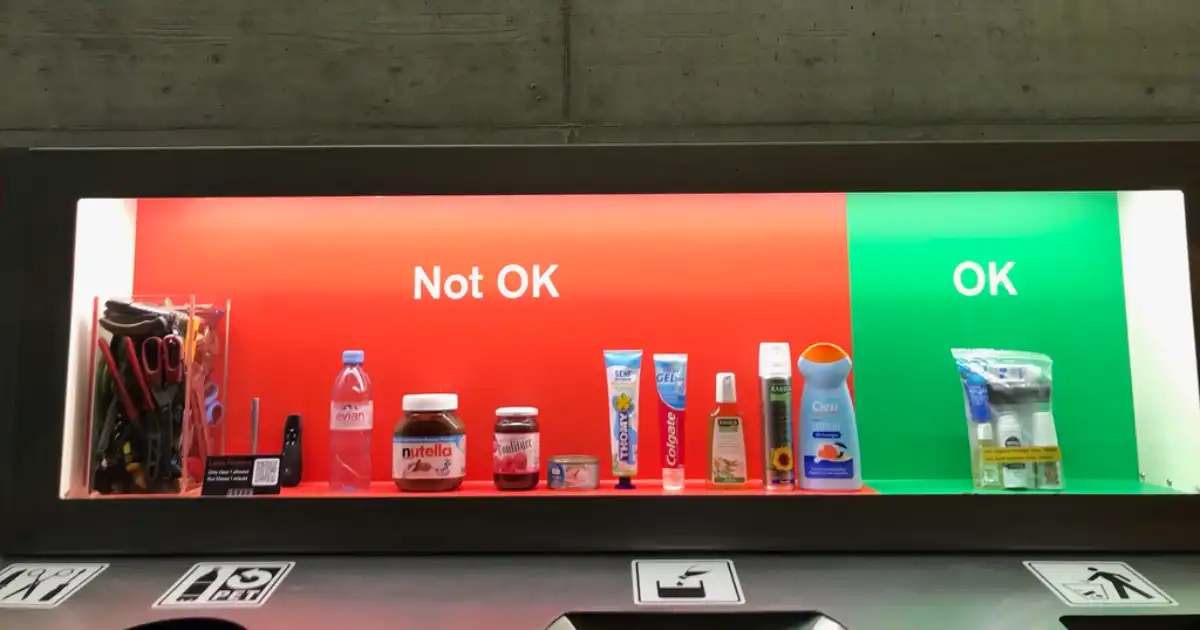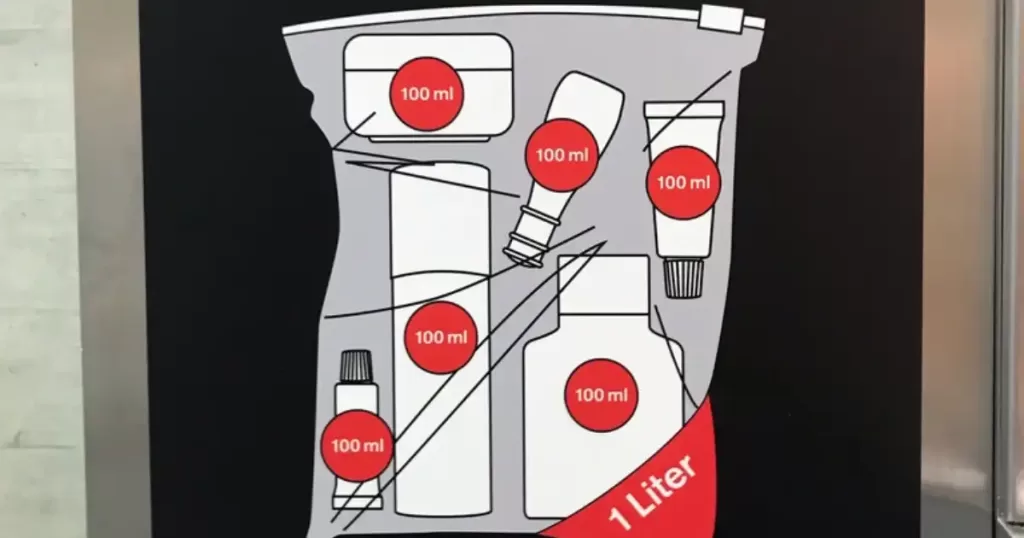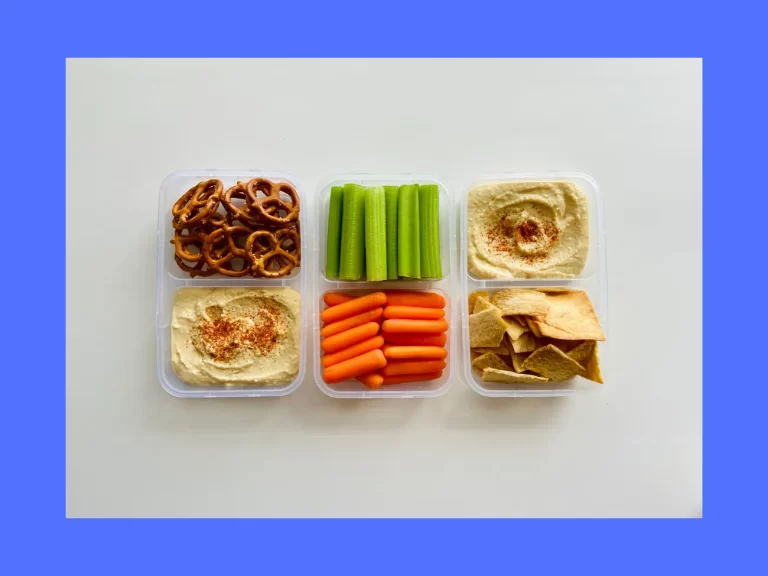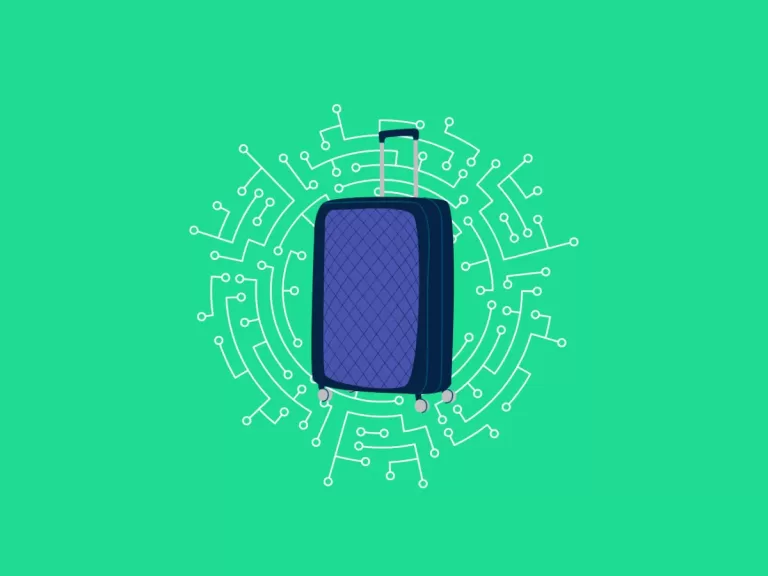What Can You Not Bring on a Plane: A Traveler’s Guide (2024)

When planning a trip, it’s crucial to be aware of what you can not bring on a plane in order to avoid any inconvenience or delays at airport security. In this blog post, we will explore the TSA regulations regarding items that are prohibited or restricted when traveling by air, as well as dangerous goods that pose potential risks during flights.
We’ll discuss the Transportation Security Administration (TSA) rules for both carry-on luggage and checked baggage, providing clarity on which items are allowed and which ones aren’t. Additionally, we’ll explore dangerous goods that pose potential risks during flights and must be avoided.
Furthermore, navigating liquid and gel restrictions can often be confusing; hence we will shed light on these limitations as well. Lastly, when traveling internationally with food or other specific items, there may be additional weight restrictions and guidelines imposed by individual countries.
This comprehensive guide aims to ensure your flying experience is smooth and hassle-free while adhering to airport security protocols.
Prohibited Items in Your Carry-On Bag
When packing for a trip, it’s essential to be aware of the items that are not allowed in your carry-on bag. The TSA and other aviation regulatory bodies have imposed limitations to guarantee the safety of travelers during air travel.
Here is a list of some common prohibited items you should avoid bringing with you on board:
- Guns and firearms: Guns, including replicas and BB guns, as well as firearm parts like magazines or clips, are strictly forbidden.
- Ammunition: Carrying ammunition is also not allowed in carry-on bags.
- Kitchen knives and sharp objects: Any item with a blade longer than four inches or any sharp object that could potentially be used as a weapon is prohibited.
- Martial arts weapons: Nunchucks, throwing stars, batons, brass knuckles – these types of martial arts weapons are all off-limits.
- Sporting goods equipment: Baseball bats, hockey sticks, golf clubs. In other words, if it can be swung or thrown forcefully enough to cause injury, leave it at home.
Note that this list isn’t exhaustive. Always check the TSA website for an up-to-date list of prohibited items before flying. Keep in mind that different countries may have additional restrictions beyond those enforced by the TSA.
Tips for Packing Your Carry-On Bag
- Pack only what’s necessary: The more cluttered your bag becomes, the harder it will be for security personnel to screen your belongings. Stick to essential items and avoid overpacking.
- Organize your electronics: Laptops, tablets, and other large electronic devices need to be removed from your bag during screening. Keep them easily accessible in a separate compartment or sleeve. I love using a packing cube for this purpose.
- Be mindful of liquid restrictions: Liquids must be in containers no larger than 3.4 ounces (100 milliliters) and placed inside a clear, quart-sized plastic bag. (Check out the section on liquids and gels below for more information.)
Navigating the regulations regarding what can and cannot be taken on a flight can prove challenging, but it is critical to understand which items are banned in order to guarantee an enjoyable journey.
Related: Can You Bring a Razor on a Plane? TSA Rules Explained
Prohibited Items in Checked Baggage
While you may think that checked baggage allows for more leniency when it comes to packing, there are still certain items that airlines strictly prohibit. Familiarizing yourself with these regulations can help guarantee a stress-free journey.
Here’s a list of some common items not allowed in your checked luggage:
- Lithium batteries: Spare lithium batteries, commonly used for electronic devices such as laptops and cameras, are not permitted in checked baggage due to the risk of fire. However, they can be carried on board with you in your carry-on luggage.
- Explosives or flammable materials: Any item that could potentially cause an explosion or fire is strictly prohibited from being packed into your checked bags. This includes fireworks, gasoline, lighter fluid, and other similar substances.
- Ammunition and firearms: While some airlines allow properly packaged firearms within specific guidelines (check with your airline), ammunition is generally forbidden from being transported via air travel.
- Powdered substances over 12 ounces (350ml): As per the Transportation Security Administration (TSA) regulations, powdered substances like protein powder or baby formula exceeding this limit must be placed in checked baggage only after undergoing additional screening at security checkpoints.
It is essential to bear in mind that this list does not cover all the regulations.
Different countries have their own standards concerning what can be taken onto planes. It’s always best to consult both the TSA website as well as any relevant government websites before traveling internationally to avoid potential issues during check-in or boarding.
Dangerous Goods
When it comes to air travel, safety is always the top priority.
Due to their potential danger, certain items are prohibited from being taken on board an aircraft regardless of whether they’re in carry-on or checked baggage. The potential for danger to both travelers and staff due to their combustible, volatile, or otherwise hazardous characteristics is why these items are strictly forbidden on planes.
Explosives and Flammable Materials
The list of prohibited explosives and flammable materials includes but is not limited to:
- Dynamite
- Blasting caps
- Fireworks
- Fuel (including cooking fuel)
- Gasoline-powered tools (e.g., chainsaws)
Aerosol containers with combustible contents (e.g., aerosols of spray paint or tear gas) should not be placed in your luggage without consulting the airline first.
If you’re unsure about an item’s classification as an explosive or flammable material, it’s best to consult with your airline before packing it in your luggage. For further details on restrictions, the Transportation Security Administration (TSA) website should be consulted.
Poisonous Substances and Infectious Materials
In addition to explosives and flammables, poisonous substances such as pesticides or infectious materials like biological specimens are also forbidden onboard aircrafts. Some examples include:
- Toxic chemicals (e.g., chlorine bleach)
- Virus cultures or bacterial strains used for research purposes/li>
- Medical waste (e.g., used syringes)
If you need to transport these types of materials, consider alternative shipping methods or consult with your airline for specific guidelines. The International Air Transport Association (IATA) also provides comprehensive information on the transportation of dangerous goods.
Radiation and Radioactive Materials
The carriage of radioactive materials is highly regulated due to their potential health risks. Examples include:
- Radioactive isotopes used in medical treatments or research
- X-ray equipment
- Certain smoke detectors containing radioactive material ul>
Before attempting to bring any item that may contain radiation onboard an aircraft, it’s essential to check with your airline and relevant regulatory agencies such as the Nuclear Regulatory Commission (NRC).
Compressed Gases and Pressurized Containers
Air travel restrictions also apply to compressed gases and pressurized containers since they can pose a risk during changes in cabin pressure. This includes oxygen tanks (unless required for medical purposes).
Liquids and Gels

In this section, we will discuss the rules for bringing liquids and gels on a plane, including restrictions on size and quantity.
3-1-1 Rule for Carry-Ons
The TSA’s 3-1-1 rule is essential knowledge for any traveler packing their carry-on luggage. This rule states that each passenger may bring one quart-sized clear plastic bag containing containers of liquid or gel products in volumes no larger than 100 milliliters (or approximately 3.4 ounces) per item in their carry-on bag.
- 3: Each container must hold less than 3.4 ounces of liquid (100 ml).
- 1: All containers must fit inside a single quart-sized clear plastic bag.
- 1: Only one such bag is allowed per passenger.
Exceptions to the Rule
In some cases, exceptions can be made to the standard TSA guidelines regarding liquids and gels in your carry-on baggage:
- Meds & Baby Necessities: If you need medications or baby necessities like formula/milk during your flight, they are exempt from the standard limitations but still require inspection at security checkpoints.
- Duty-Free Items: Purchased duty-free items that exceed these limits can usually be carried onboard if properly sealed by airport staff in a sealed tamper-evident bag and accompanied by a receipt.
Checked Luggage Rules for Liquids & Gels
Pack liquids and gels securely in your checked luggage to avoid any messes or leaks during transit. To avoid any issues:
- Place containers in resealable plastic bags.
- Ensure lids and caps are tightly secured.
- Add padding around fragile items like glass bottles.
Note that certain hazardous materials such as flammable liquids, corrosive substances, or toxic chemicals may be prohibited from both carry-on and checked luggage altogether. Always consult the airline’s guidelines before packing these types of items.
Restricted Items
Certain items may be permitted with certain limitations depending on the airline and destination country’s rules. These restrictions often involve size or quantity limits and vary depending on the airline and destination country’s regulations. Let’s explore some commonly restricted items you might want to bring along on your journey.
Aerosols
Aerosol products like hairspray, deodorant, and shaving cream can be carried in your carry-on luggage as long as they meet the TSA’s 3-1-1 liquids rule. This means each container must not exceed 100ml (3.4oz) and all containers should fit into a single quart-sized resealable plastic bag.
Batteries
Batteries for personal electronic devices, such as laptops, smartphones, cameras, etc., are generally allowed in both carry-on and checked baggage. However, spare lithium batteries must be packed only in your carry-on luggage due to their potential fire risk.
Spare Lithium Batteries:
- Limited to two per passenger for larger lithium-ion batteries (between 101 -160 watt-hours).
- No limit for smaller lithium-ion batteries (up to 100 watt-hours).
- All terminals must be protected from short-circuiting by using the original packaging or placing electrical tape over exposed terminals.
Medications & Medical Equipment
You are permitted to bring prescription and over-the-counter medications in your carry-on luggage. It’s critical to have the medications in their original containers with labels that are easily visible.
Liquid medications that exceed the 3-1-1 rule are allowed but must be declared at security checkpoints for inspection.
Medical equipment such as CPAP machines, nebulizers, or oxygen tanks may also be brought on board.
The best thing to do is to contact your airline in advance to make sure you are cognizant of any particular regulations or limitations they may have concerning medical gear.
Sporting Equipment
Sporting equipment like golf clubs, skis, snowboards, and fishing rods can usually be checked-in as part of your baggage allowance. Some airlines might require these items to be packed in a specific way or within certain size limits; so always check with your airline before packing these items.
Tips for Traveling with Restricted Items:
- Always double-check the regulations set by both the TSA and your chosen airline before packing restricted items.
- Contact customer service if you’re unsure about an item’s restrictions – better safe than sorry.
- Pack restricted items securely and follow all guidelines provided by authorities and airlines.
FAQs: What Can You Not Bring on a Plane
What is not allowed to carry on a plane?
Items not allowed in carry-on luggage include sharp objects, firearms, and ammunition, tools over 7 inches long, self-defense items such as pepper spray or stun guns, flammable materials like lighter fluid or aerosol sprays (excluding personal care products), and certain sports equipment. For a complete list of prohibited items, it’s always best to refer to the TSA’s guidelines.
What is the TSA 311 rule?
The TSA 311 rule refers to the restrictions on liquids carried in hand luggage: each passenger may bring containers with less than 3.4 ounces (100 milliliters) of liquid per item; all containers must fit into one clear quart-sized plastic bag; and only one bag is permitted per traveler. This applies to gels, creams, pastes, and aerosols too.
Conclusion
In conclusion, when flying it is essential to be mindful of what objects are not allowed in both your carry-on and checked luggage. Not only is bringing certain objects on a plane illegal but can also pose safety risks for other passengers.
When packing your checked and carry-on bags always double-check to make sure that there isn’t anything forbidden or restricted that you cannot bring on the plane with you.
Have a safe flight!





